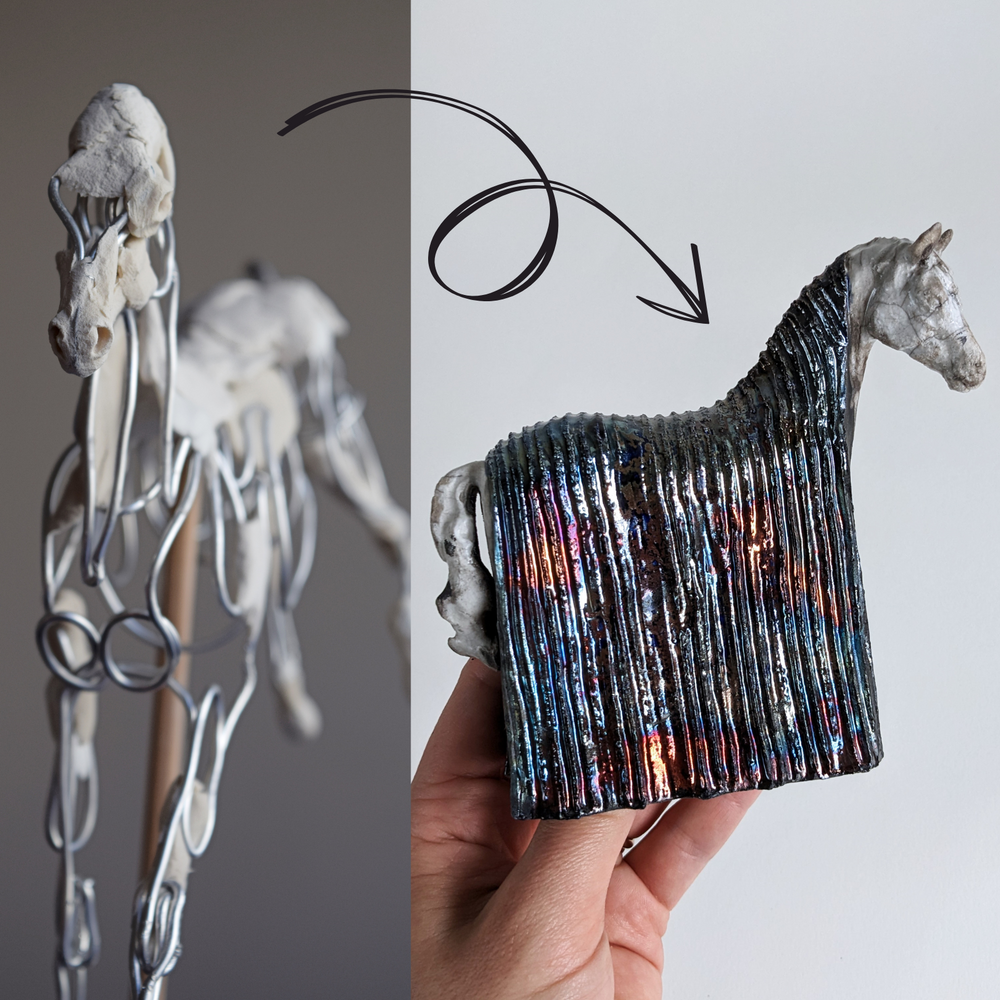
If you’ve spent any time in online pottery groups, you’ve probably seen the question: Can I use air dry clay instead of ceramic clay? Many eager beginners want to try pottery but lack access to a kiln—so they wonder if air dry clay is a viable substitute. Spoiler alert: it’s not! :( While I may have rained on your parade, that doesn’t mean air dry clay isn’t a fun and accessible way to get started. Let’s dive into why air dry clay and pottery clay are worlds apart, and whether it can truly lead you to the joys of ceramics.
The Key Differences Between Air Dry Clay & Ceramic Clay
1) Air Dry Clay Can Never Be Pottery
The biggest difference? Ceramic clay gets fired in a kiln, which transforms the clay through a process called vitrification. The addition of glazes, which are essentially glass, results in a smooth sealed surface that can be durable and food-safe (depending on the glaze). Air dry clay, on the other hand, simply hardens as it dries—staying porous, and is unsuitable for anything that needs to hold water or food. Even if you paint and seal it, it won’t have the durability of ceramics.
It should be noted that air dry clay is a massive category with an incredible amount of variation. Within this variety, there are some brands of air dry clay that are more "ceramic" in feel. While these earthenware-type air dry clays can behave similarly to real ceramic, they cannot be fired and may be quite brittle when dry.

Ceramics generally requires different working methods than air dry clay
2) Air Dry Clay Works Differently
Even before firing, ceramic clay and air dry clay behave differently:
-
Workability: Air dry clay is often softer, and some can even be fibrous (depending on the brand). It's softness can make it difficult to use for certain techniques like wheel throwing. Ceramic clays also have a certain elasticity combined with structural strength that is hard to find in air dry clay.
-
Joining Pieces: In ceramics, you join pieces together using the slip and score method (to maintain moisture levels). With air dry clay you can add fresh clay to already dried pieces.
-
Structural Support: Armatures are a staple when creating sculptures in air dry clay; they ensure that your art piece is strong. While you can use an armature or supports when building in ceramics, you cannot fire a piece with an armature inside as the kiln would melt or warp most materials.
-
Drying Process: While both air dry clay and ceramic can crack as they dry. Cracks in ceramic clay should be avoided at all costs, while air dry clay cracks can easily be fixed.
-
Finishing Touches: Air dry clay cannot be glazed like ceramics, but the choices for decoration are endless.
- Costs: It might seem odd, but ceramic clay is incredibly cheap compared to the same amount of air dry clay.
 Armatures are essential for air dry clay sculptures - no matter what size
Armatures are essential for air dry clay sculptures - no matter what size
Where Air Dry Clay Shines
Despite its limitations, air dry clay has awesome perks:
-
No Kiln? No Problem! No need for specialized tool. It's perfect for hobbyists, kids, and beginners.
-
Ideal for Sculpture & Decor: If you’re making figurines, ornaments, or home decor, air dry clay works beautifully.
-
User Safe and Clean: working with ceramics is a messy business, and there are very real heath risks associated with breathing in the dust from dried ceramic clay. Air dry clay does not produce dust (unless you are sanding, in which case - take it outside!), and most brands are non-toxic.
 There are so many possibilities with air dry clay!
There are so many possibilities with air dry clay!
Is Air Dry Clay a Gateway to Real Pottery?
For some, air dry clay can be a stepping stone, helping people get comfortable with shaping and sculpting. However, ultimately, they are different products, and they behave differently. Transitioning to ceramics will mean learning new skills like wedging, drying, and glazing (not to mention kiln tech).
When you're trying to decide if air dry clay is right for you, you should ask yourself what you want to create. If the answer is mugs and other utilitarian objects, than you need to embrace ceramic clays. If you’re just looking to play with clay and create decorative pieces, air dry clay can be a great place to start. No matter which path you take, the most important thing is to enjoy the creative process!
What's Next?
Did you know that there are air dry clay techniques you can stop doing?
Discover how you can make ceramics at home

